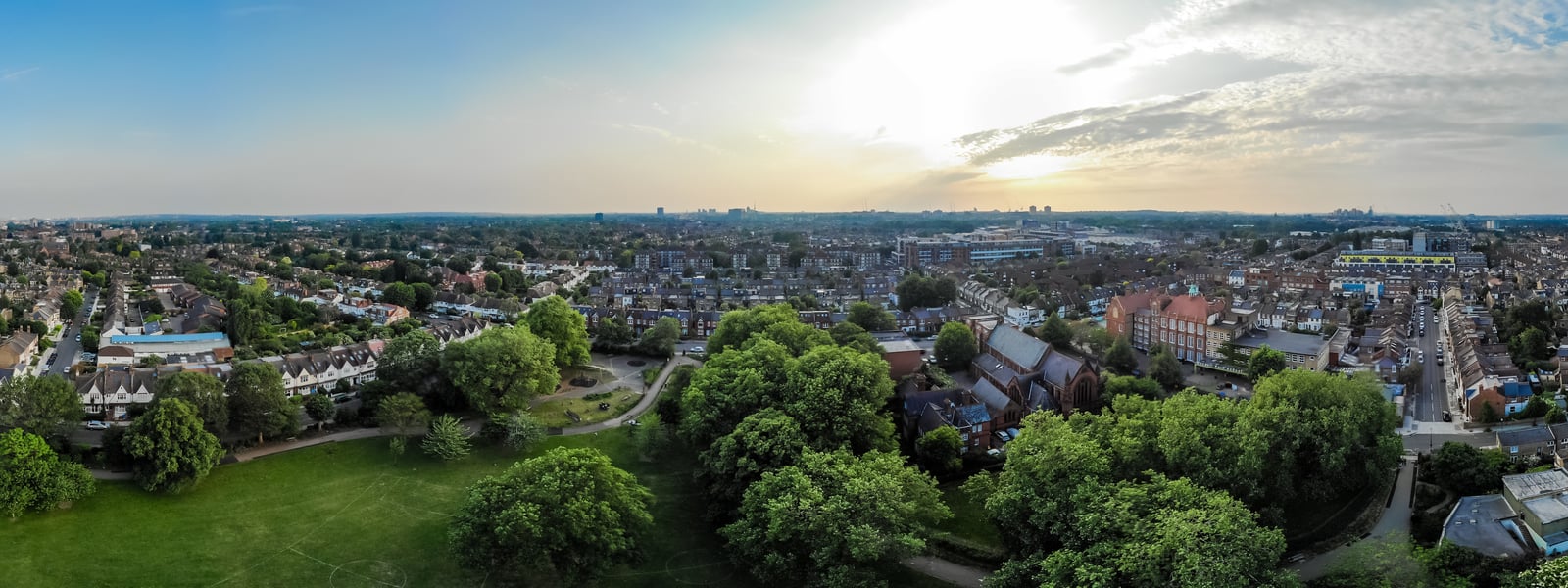London sales and rental review Q2 2022

Annual rental growth increased to around 15% in London in Q2, taking values beyond pre-pandemic levels.
The sales market recorded lower levels of growth and continues to lag other regions.
In PCL rents grew strongly again but the sales market slowed as the wider economic uncertainty started to affect sentiment.
Greater London overview
The gap in relative house price growth between London and the rest of the country grew again in Q2, despite an increase in the rate of growth in the capital. According to the latest May ONS index, London recorded annual growth of 8.2%, compared to 13.7% for England excluding London. The Nationwide regional indices for Q2 report similar levels of growth: 6.0% in London and 11.4% for the UK. Sales activity in London continued to recover slightly compared to the rest of the country.
London rental growth remains below the national average according to the ONS index, although it has closed the gap slightly in recent months. However, this measure is based on existing tenancies so can be very slow to reflect the latest market conditions; other timelier rental market measures (shown below) suggest much higher rental growth in London. Figure 1 shows the relative performance over time of London against the rest of England in terms of house prices, sales transactions, and rents.
Figure 1 – London vs. rest of England: values and transactions

Source: ONS, Land Registry. *Positive = London performing better than rest of England.
Homelet’s June index, based on newly agreed lets, reported a further acceleration of rental growth in London. The annual rate hit 14.9%, compared to a UK excluding London figure of 8.7%. Rightmove’s index, based on asking rents, recorded even higher annual growth of 15.8%, according to their Q2 index report, again ahead of the rent of the country (11.8%).
Table 1 – Greater London Rental Data
| Average rent pcm | Annual change | ||
| Homelet, Jun-22 | UK ex. London | £936 | +8.7% |
| London | £1,846 | +14.9% | |
| Rightmove, Q2 22 | UK ex. London | £1,126 | +11.8% |
| London | £2,257 | +15.8% |
Market sentiment
Short-term market sentiment declined in Q2, with the June RICS survey (results shown in Figure 2) reporting negative net balances for both prices and activity over the next three months (-10 and -13 respectively). The longer-term outlook is less positive than earlier this year but more optimistic than that for the near future. 12-month expectations for prices were at +38 in June, although this is down from a recent peak of +84 February, and 12-month sales expectations are at +10, (+61 in Feb).
Figure 2 – RICS Survey Sales and Price Expectations, London

Source: RICS Housing Market Survey (Jun 2022)
In contrast to sales the rental market showed no sign of slowing down in Q2. The net balance for tenant demand stayed broadly steady at +58 in June (+60 in March) and new instruction fell back again, to -27, after being in positive territory in Q1. Rent expectations remained very high at +65, although this is down on the record high of +80 recorded in March.
Figure 3 – RICS Survey Rental Indicators, London

Source: RICS Housing Market Survey (Jun 2022)
Borough Level data
The table below shows average values by borough for various property types, based on completed sales.
Table 2 – London Borough House Prices, to May 2022

Source: ONS, Land Registry (N/A means no/low sales count). Note from Land Registry: Low numbers of sales transactions in some boroughs can lead to volatility in the data. While we make efforts to account for this volatility, the change in price in these local levels can be influenced by the type and number of properties sold in any given period.
The table below shows median by borough by size of property, based on all rents paid.
Table 3 – London Borough Rental Values, April 2021 to March 2022

Source: ONS/VOA
Prime Central London
Sales values remained relatively flat in Q2 after a 0.6% quarterly fall, according to the Cluttons Prime Central London Index. Rents rose again after a slight pause in their upward trajectory over recent quarters, recording quarterly growth of 4.5%. Results over the past three years are shown in Figure 4. On an annual basis sales values are broadly unchanged at 0.4% lower than Q2 2021 whereas rents are up 22.3% compared to a year earlier.
Figure 4 – Cluttons Prime Central London Index

Source: Cluttons
Other indicators are more positive about capital values in PCL. Average achieved £ per square foot values grew by 9.3% in the year to Q2, according to transactional evidence from LonRes. Activity fell by 19% on an annual basis, however Q2 2021 saw very high numbers of transactions due to the stamp duty holiday – turnover remains relatively high compared to typical trends. Average discounts fell to 7.2% (compared to 7.9% in Q1) and 20% of properties sold within three months of coming to market, compared to 14% last quarter.
LonRes also reported further strong growth in PCL rental values in Q2, despite the rises already seen over previous quarters, with quarterly growth of 2.7%. This takes annual growth over 30%, with no sign that the stock shortages highlighted previously are coming to an end – there are 40% fewer properties available to rent than a year ago.
Cluttons’ view – James Hyman, head of agency
Activity across Cluttons’ office catchments – across zone 1 London and into 2 – flattened off towards the end of Q2 as both potential buyers and vendors took a ‘wait and see’ approach in light of growing economic uncertainty. More supply may start to emerge if the employment situation worsens, but at present values are supported by the lack of available stock to buy.
In the core market of properties valued from £500k to £3m, the increasing cost of mortgage finance means some owners – particularly those who bought in the past few years at relatively elevated prices – may be struggling to refinance on similar terms, potentially driving them to look to sell. It also means potential buyers have less buying power for a given level of mortgage repayment. Above this price level borrowing is less important and the market should be more resilient.
| “Potential buyers and vendors took a ‘wait and see’ approach in light of growing economic uncertainty, but the rental market remains buoyant and demand is well ahead of supply.” |
The rental market remains buoyant and demand is well ahead of supply. Rental values more than bounced back after falling during 2020 but the pace of growth has slowed significantly compared to late last year. The chance of new supply coming to the market in response to this strong performance may be limited. Many landlords are put off by increasing regulation around the sector, including the new White Paper setting out the abolition of Section 21 ‘no-fault’ evictions.


